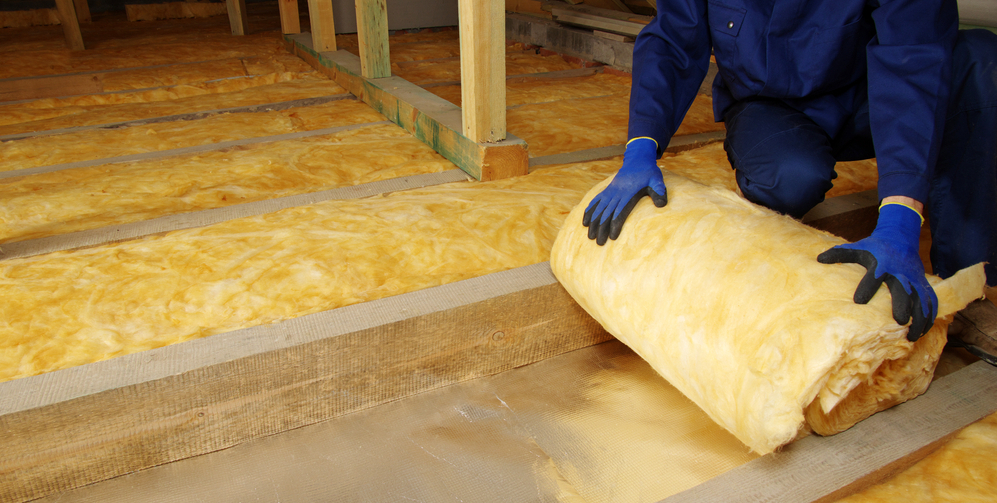
Whether you're insulating your roof for the purposes of cost-saving and energy efficiency or you're undertaking a new build or extension project, tackling the terminological differences between warm roofs and cold roofs is vital.
What roof insulation do I need? is usually the most important question at the forefront of any roof insulation job; but it's more easily and successfully answered by considering the particular roof insulation configuration that you want to achieve.
A staggering 25% of heat loss occurs through the roof of a poorly insulated home, which can cause your heating bills to skyrocket and your energy efficiency to plummet. Whether you're feeling the pinch due to rising inflation and the cost of living crisis or your concerns are more situated in saving energy for eco-friendly reasons, any roofer or homeowner can benefit from an insight into roof insulation.
But which is better - a warm roof or a cold roof?
In our latest blog, Roof Giant will break down exactly what you need to know about warm and cold roofs; from advantages and disadvantages to the key differences in roof insulation performance.
What Is A Warm Roof?
When your insulation layer is installed between and above the rafters and just below your roofing membrane, this is called a warm roof construction. Warm roofs are named after the high level of insulation performance that they offer. They are typically associated with pitched roof constructions and are quick and easy to install, giving you a great balance between thermal insulation and affordability. Warm roof insulation will also ensure that your roof structure maintains a temperature that is closer to that of the inside of your home and will therefore help to retain heat within your property. Due to the thermal benefits of a warm roof construction, your roof will conserve heat and be breathable at the same time - allowing moisture to escape - which, in turn, helps to prevent damp and similar moisture-related issues.
Our Celotex GA4080 PIR Insulation Board is a high performance solution for your next warm roofing project. Easy to handle and install, you'll benefit from long-term, reliable energy-saving benefits, an easy to cut and shape design and incredible versatility in pitched roofs, timber framed and steel framed systems. Celotex PIR Insulation Board also comes with low emissivity foil facings, giving improved thermal insulation performance within cavity air spaces.
What Is A Cold Roof?
A cold roof is identified as being between the rafters and between or below your roof floor joists with no insulation layer over the roofing membrane, therefore making the roof structure 'cold'. A cold roof is less efficient than a warm roof but will be a significant feature in both flat and pitched roof constructions for anyone looking for the easiest, most effective and convenient method to insulate their roof. During the building process, you'll find that cold insulating your roof is probably the most straightforward insulation method and is particularly suitable in roof structures that have limited headroom. You'll also find that a cold roof is your best choice for flat roofs, extension projects and balconies.
Knauf Insulation Loft Roll is an excellent glass mineral wool insulation solution designed to enhance roof insulation and improve energy efficiency in pitched roofs at ceiling level. Featuring an extremely lightweight wool composition while also offering great thermal, acoustic and fire performance, the lightweight quilt also makes for an uncomplicated installation process.

Warm Roofs Vs Cold Roofs: Things To Consider...
Warm roof insulation and the way it is positioned can limit the amount of available room in your roof space. Usually space-related issues are counteracted by the interior shape of a pitched roof, where the two sloping sides form an apex, therefore allowing you enough practical, usable space. But it's worth contemplating the size of your attic, loft or roof area before you go ahead with your warm roof construction. You may also need to consider the structural weight that your warm roof insulation will have on the rest of your roof structure before undertaking your warm roof project.
If you're about to undertake a cold roof construction it's highly probable that you'll need a cold roof ventilation system to prevent condensation and excess moisture from building up. If roof ventilation isn't properly addressed it can cause everything from minor damp and humidity issues right the way up to severe structure failure. Cold roofs will also be unsuitable for high humidity rooms such as steam rooms, saunas and even some bathrooms as the potential for condensation issues is much more significant.